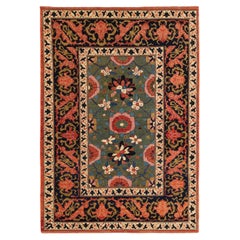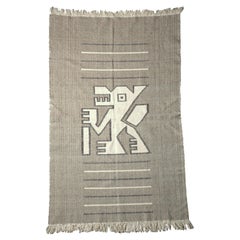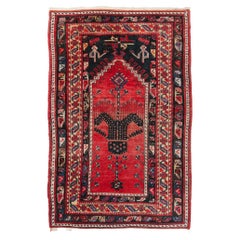Rugs
21st Century and Contemporary Turkish Oushak Rugs
Wool, Natural Fiber, Organic Material
21st Century and Contemporary Turkish Revival Rugs
Wool, Natural Fiber, Organic Material
21st Century and Contemporary Turkish Revival Rugs
Wool, Natural Fiber, Organic Material
Early 1900s American Antique Rugs
Wool, Cotton
1950s Indonesian Vintage Rugs
Wool, Cotton
Early 20th Century Turkish Oushak Rugs
Wool, Natural Fiber, Organic Material
Mid-20th Century Turkmen Kilim Rugs
Wool, Natural Fiber
Mid-20th Century Turkish Kilim Rugs
Wool, Natural Fiber, Organic Material
21st Century and Contemporary Turkish Revival Rugs
Wool, Natural Fiber, Organic Material
Mid-20th Century Canadian Folk Art Rugs
Wool, Burlap, Pine
Mid-20th Century Turkish Kilim Rugs
Wool, Natural Fiber
1960s American Mid-Century Modern Vintage Rugs
Wool
Mid-20th Century Turkish Oushak Rugs
Wool, Natural Fiber
Early 20th Century Turkish Oushak Rugs
Wool, Natural Fiber
Mid-20th Century Folk Art Rugs
Wool
Mid-20th Century Caucasian Kilim Rugs
Wool, Natural Fiber
21st Century and Contemporary Turkish Revival Rugs
Wool, Natural Fiber, Organic Material
1850s Folk Art Antique Rugs
Wool, Cotton, Linen
Mid-20th Century Turkish Kilim Rugs
Wool, Organic Material, Natural Fiber
Early 1900s Antique Rugs
Wool
21st Century and Contemporary Turkish Oushak Rugs
Wool, Natural Fiber, Organic Material
21st Century and Contemporary Danish Modern Rugs
Wool
Mid-20th Century Turkish Kilim Rugs
Wool, Natural Fiber
Late 20th Century Canadian Folk Art Rugs
Wool, Burlap
Mid-19th Century American Folk Art Antique Rugs
Wool, Linen
21st Century and Contemporary Turkish Arts and Crafts Rugs
Wool, Natural Fiber, Organic Material
21st Century and Contemporary Turkish Revival Rugs
Wool, Natural Fiber, Organic Material
Late 19th Century American Navajo Antique Rugs
Wool
1980s Brazilian Modern Vintage Rugs
Leather
21st Century and Contemporary Turkish Revival Rugs
Wool, Natural Fiber, Organic Material
Late 20th Century Turkish Kilim Rugs
Wool, Natural Fiber
Early 20th Century Turkish Oushak Rugs
Wool, Natural Fiber, Organic Material
21st Century and Contemporary Turkish Revival Rugs
Wool, Natural Fiber, Organic Material
21st Century and Contemporary Turkish Revival Rugs
Wool, Natural Fiber, Organic Material
1950s Ecuadorean Vintage Rugs
Wool, Cotton
Early 20th Century American Adirondack Rugs
Wool
1960s Moroccan Vintage Rugs
Wool, Cotton
Early 20th Century Turkish Oushak Rugs
Wool, Natural Fiber
1970s Mid-Century Modern Vintage Rugs
Fabric
21st Century and Contemporary Turkish Revival Rugs
Wool, Natural Fiber, Organic Material
21st Century and Contemporary Turkish Revival Rugs
Wool, Natural Fiber, Organic Material
1990s Turkish Country Rugs
Wool, Goat Hair
Mid-20th Century Turkmen Oushak Rugs
Wool, Natural Fiber
Mid-20th Century Turkish Kilim Rugs
Wool, Natural Fiber
Mid-20th Century Turkish Kilim Rugs
Wool, Natural Fiber
Mid-20th Century Canadian Folk Art Rugs
Wool, Burlap, Pine
1980s Brazilian Modern Vintage Rugs
Leather
21st Century and Contemporary Turkish Oushak Rugs
Wool, Natural Fiber, Organic Material
Late 19th Century Turkish Oushak Antique Rugs
Organic Material, Wool, Natural Fiber
Mid-20th Century Canadian Folk Art Rugs
Wool, Burlap, Pine
21st Century and Contemporary Turkish Revival Rugs
Wool, Natural Fiber, Organic Material
Late 20th Century Turkish Kilim Rugs
Wool, Natural Fiber
Late 19th Century Caucasian Kilim Antique Rugs
Wool, Natural Fiber
1990s Turkish Kilim Rugs
Wool
21st Century and Contemporary Turkish Oushak Rugs
Wool, Natural Fiber, Organic Material
20th Century Chinese Art Deco Rugs
Wool
Mid-20th Century Turkish Oushak Rugs
Wool, Natural Fiber
Mid-20th Century Turkish Kilim Rugs
Wool, Natural Fiber




